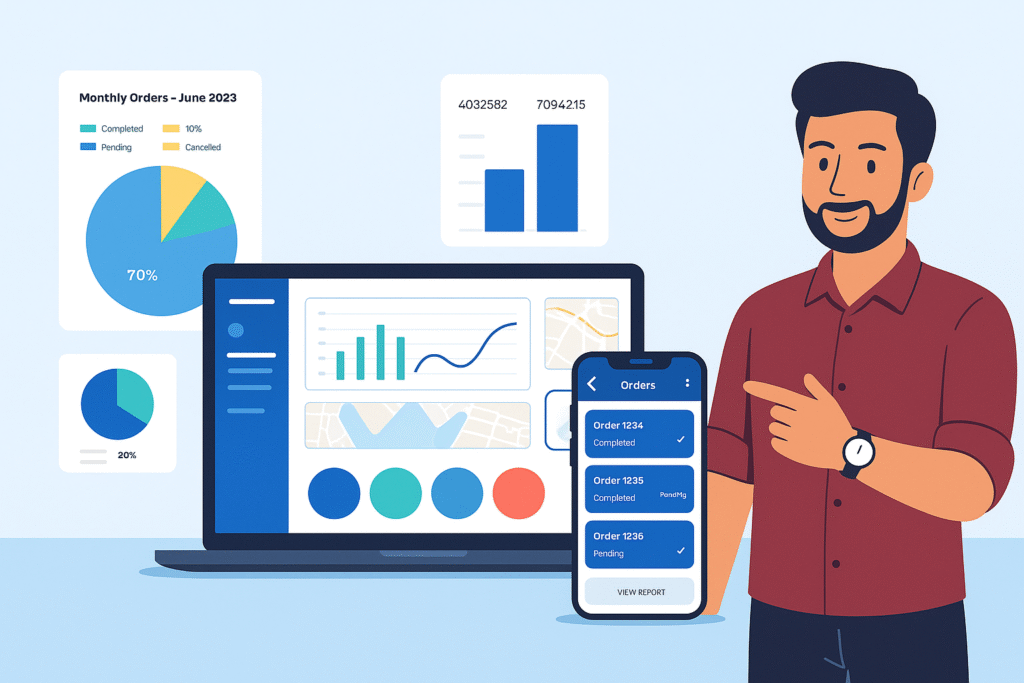Introduction
In today’s fast-paced consumer market, CPG (Consumer Packaged Goods) companies face growing pressure to meet demands efficiently and scale operations across diverse regions. Traditional distribution methods and manual sales processes often lead to delays, stockouts, and missed sales opportunities.
That’s why leading CPG brands are turning to automation and digitization.
CPG software is not just a tech trend it’s a business essential for improving supply chain visibility, sales performance, and distributor engagement.
Challenges in CPG Distribution & Sales
1. Limited Visibility into Product Movement Across the Supply Chain
Many CPG companies lack end-to-end visibility into where their products are at any given moment whether they’re with a distributor, in transit, or on a retail shelf. This lack of transparency leads to:
Stockouts or overstocking
Inaccurate demand forecasting
Delayed response to market demands
Without a clear view of inventory and logistics, businesses struggle to optimize supply chain efficiency and customer satisfaction.
2. Manual Order Taking, Leading to Errors and Slower Fulfillment
In many cases, sales representatives still rely on pen-and-paper or basic spreadsheets for order collection. This outdated process causes:
Human errors such as wrong SKUs or quantities
Delayed order processing and deliveries
Miscommunication between sales and inventory teams
As a result, fulfillment becomes slow and inaccurate, which can frustrate both distributors and retailers.
3. No Access to Real-Time Data for Decision-Making
CPG businesses often operate without a centralized system that gives live updates on sales, inventory, or market trends. This creates challenges like:
Delayed decision-making
Inability to respond quickly to sales dips or surges
Missed growth opportunities
In today’s fast-paced market, not having real-time data is a major disadvantage when it comes to staying competitive.
4. Disjointed Communication Between Field Teams and Distributors
Sales reps, field agents, and distributors frequently operate in silos, with little coordination. This leads to:
Mismatched expectations
Inefficient sales planning
Gaps in customer service
A lack of proper communication tools makes it difficult to align goals, share updates, or resolve issues promptly, ultimately affecting the brand’s market presence.
These challenges create operational inefficiencies, poor forecasting, and lower profits — especially for brands operating in multiple territories.
How CPG Software Solves These Issues
Route Planning & Sales Rep Tracking
Optimize your sales team’s efficiency with smart route planning and geo-tracking. Know exactly where your reps are, monitor their visits in real time, and ensure maximum coverage with minimal travel time. This leads to better time management and increased productivity in the field.
✅ Digital Order Management
✅ Distributor Performance Analytics
✅ Real-Time Inventory Updates
Key Features to Look for in CPG Software
When choosing a CPG software solution, make sure it includes these must-have features:
Mobile Access for Field Teams
Sales reps and field agents can work on the go, even offline.
Analytics Dashboard
Get visual reports on sales, returns, stock, and performance.
Integration with ERP/CRM
Sync data across platforms to create a unified sales ecosystem.
DMS Support & Distributor Onboarding
Onboard distributors easily and manage their activity through an integrated DMS.
Geo-Tracking
Monitor field staff activity and ensure accountability.
Benefits for Your Brand
Faster Order Cycles
📈 Increased Sales Productivity
CPG software automates routine tasks like data entry, report generation, and tracking sales targets.
🛍️ Better Retail Execution
🤝 Stronger Distributor Relationships
CPG software brings transparency into order status, payment tracking, and claim processing.





Comments